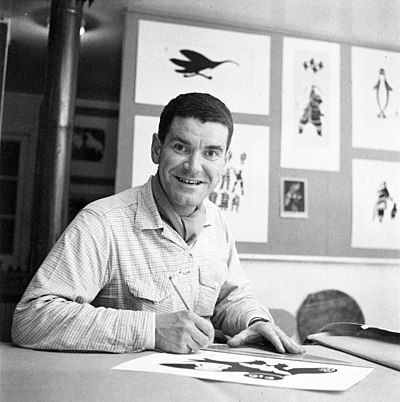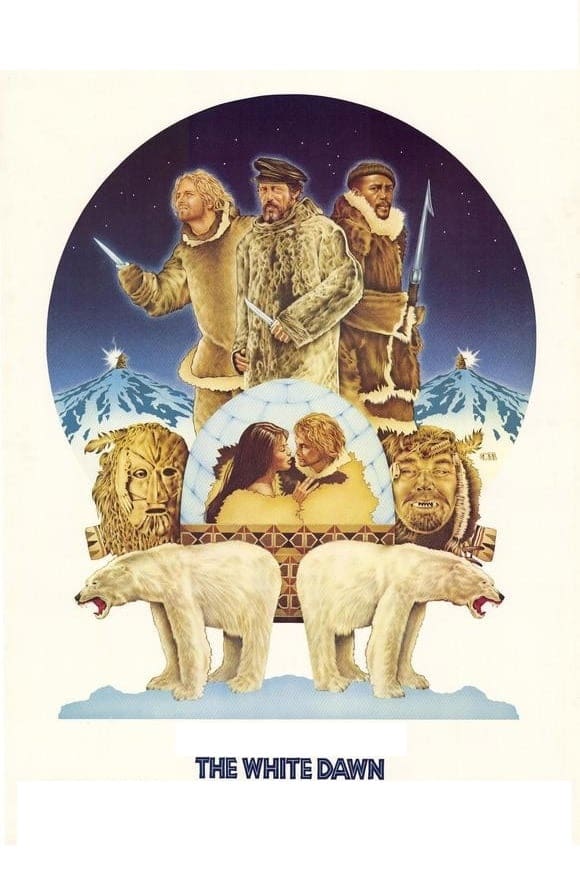Biography
James Archibald Houston (June 12, 1921 – April 17, 2005) was a Canadian artist, designer, children's author and filmmaker who played an important role in the recognition of Inuit art and introduced printmaking to the Inuit. The Inuit named him Saumik, which means "the left-handed one". Born in St. Catharines, Ontario, James Houston studied art as a child with Arthur Lismer and was educated at the Ontario College of Art (1938–40), Académie de la Grande Chaumière in Paris (1947–48) and in Japan (1958–59) where he studied printmaking. He fought in World War II with the Toronto Scottish Regiment, receiving the Canadian Volunteer Service Medal. After the war, he went to the Eastern Arctic to paint and lived there for twelve years. He was a northern service officer and civil administrator of western Baffin Island. In 1962, he moved to New York and became associate director of design with Steuben Glass.
Moving effortlessly and with great success between different activities, perhaps his biggest accomplishment was his work in the Eastern Arctic of Canada, developing Inuit art. In 1948, Houston traveled to a small Inuit community in Arctic Quebec, Inukjuak (then Port Harrison), to draw and paint images of the Inuit and the Arctic landscape. He traded his own drawings, done on the spot, for a small carving, by an Inuit hunter named Nayoumealuk, of a seated deer. Houston recognized its aesthetic appeal and returned to the Canadian Handicrafts Guild, in Montreal, with roughly a dozen small carvings, done mostly in steatite. The guild, which had tried as early as the 1920s to foster an Inuit-handicrafts market, was impressed with the carving; they were equally impressed by Houston. The guild secured a federal government grant of $1,100 and sent Houston back north in the summer of 1949 to make bulk purchases in various communities in the Eastern Arctic.
When Houston returned to Montreal that fall, the guild mounted their first exhibition of Inuit carvings. According to collector Ian Lindsay, the first exhibition was a complete sell-out. The government put more resources into developing an art and handicrafts market in the Arctic, hiring Houston to live in Cape Dorset as the first "roving crafts officer", and tapping him to write promotional material for sales in the south. The guild's fall sales exhibitions became annual affairs, with lineups routinely stretching out the door and down the block on Peel Street. By the late 1950s, the Government had sponsored tours of Inuit art through Eastern and Western Europe, South America and the Middle East. After successfully launching Inuit sculpture, Houston introduced printmaking in 1957, which met with the same success.
Houston lived in Cape Dorset with his wife Alma Houston and his two sons, Samuel and John Houston until 1962, when the couple split and he moved to New York City. He was writer and producer of the 1974 film based on his novel, The White Dawn. In 1976, his 70-foot high acrylic and aluminum sculpture "Aurora Borealis" was installed in Calgary's new Glenbow Museum, where it is still on display. He died in New London, Connecticut, aged 83.
Filmography
all 1
Movies 1
Writer 1
Information
Known ForWriting
GenderMale
Birthday1921-06-12
Deathday2005-04-17 (83 years old)
Birth PlaceSt. Catharines, Canada
CitizenshipsCanada
AwardsOfficer of the Order of Canada, Massey Medal
This article uses material from Wikipedia.
 James Houston
James Houston- Filmography
- Information
